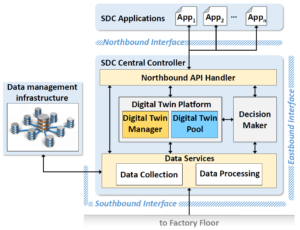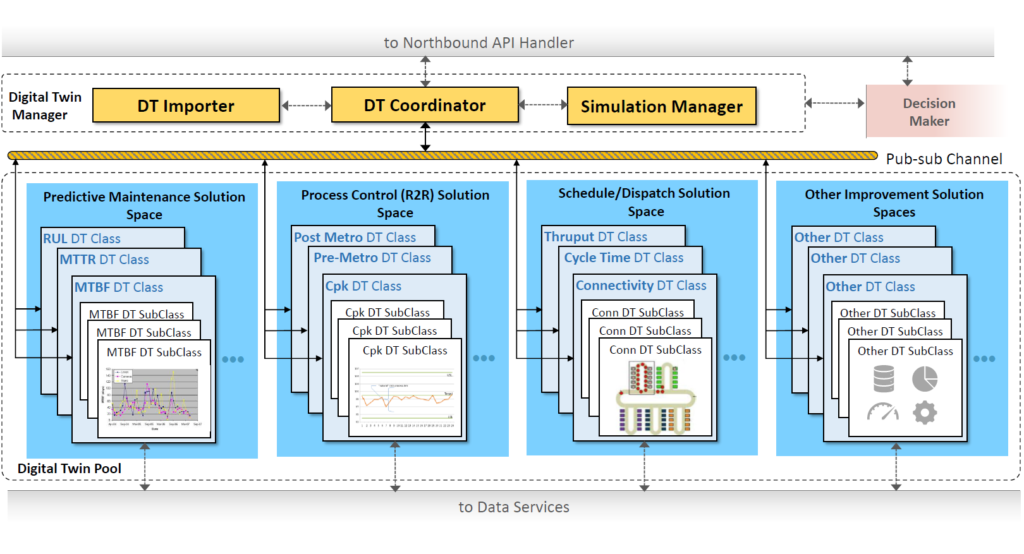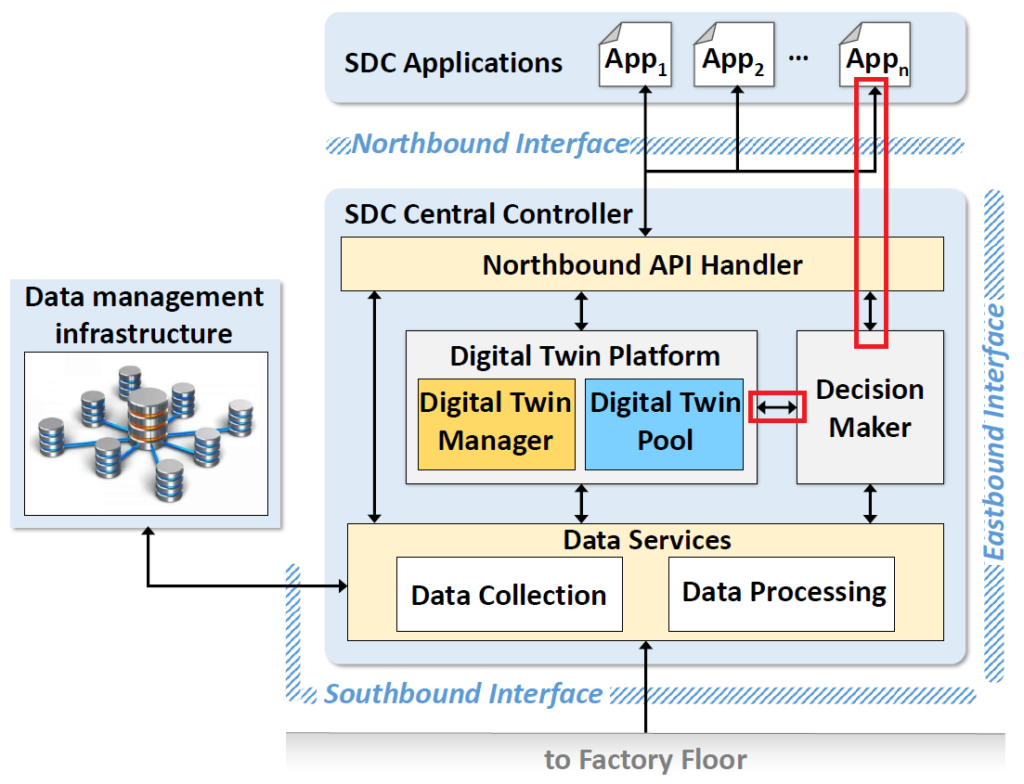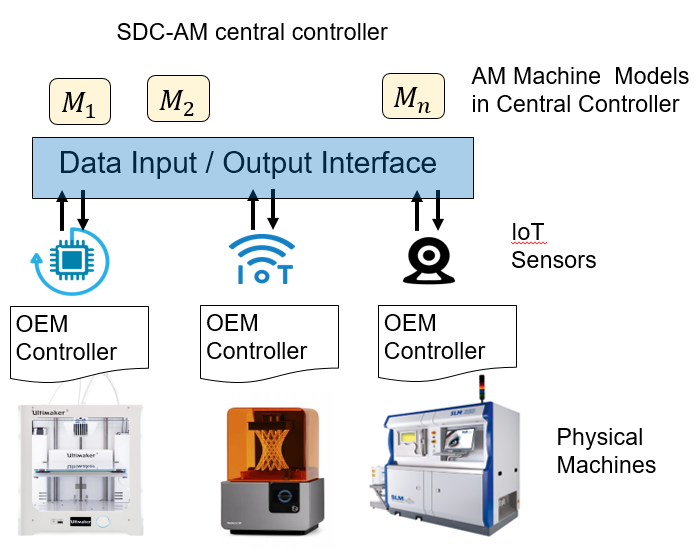Software-defined control (SDC) is a framework for the rapid reconfiguration of smart manufacturing systems in response to changing demands or factory conditions, supply networks, or customer needs. SDC abstracts the low-level functionality of the factory floor in a control plane that hosts a central controller. A set of applications (e.g., anomaly detection, quality control) provides the central controller with the necessary information to detect changes in the system, evaluate alternative configurations, and make recommendations for reconfiguration that can be rapidly deployed to the factory floor. Compared to other reconfiguration frameworks, SDC provides advantages in flexibility, compatibility with prevailing automation technologies, and the ability to monitor system performance. Since the manufacturing system is allowed to function with or without the central controller, SDC is strictly value-add and it may be turned off if reconfiguration is not desired.
The SDC framework consists of a central controller and a set of interfaces. The central controller is a software stack that supports logically-centralized management of control devices by suggesting reconfigurations to the MES. Unlike other software-defined approaches, the controller does not exercise direct control over the state in the lower-level devices. The central controller has three major components: a catalog of services to support applications, a decision-maker, and a simulation platform. The central controller communicates with control devices through the southbound interface. The northbound interface enables communication between SDC applications and the central controller. The eastbound interface allows system administrators to configure and manage the central controller and service deployment, and it is a bridge for the central controller to communicate with the MES and the ERP.
Using Digital Twin technology to build a real-time global view of the system
Researchers: Yassine Qamsane, CY Chen, Kao Bin Chou, Efe Balta
Discrete manufacturing systems are complex cyber-physical systems (CPS) and their availability, performance, and quality have a big impact on the economy. Smart manufacturing promises to improve these aspects. One key approach that is being pursued in this context is the creation of centralized software-defined control (SDC) architectures and strategies that use diverse sensors and data sources to make manufacturing more adaptive, resilient, and programmable. In this work, we present the SDCWorks — the modeling and simulation framework for SDC. It consists of the semantic structures for creating models, a baseline controller, and an open source implementation of a discrete event simulator for SDCWorks models. We provide the semantics of such a manufacturing system in terms of a discrete transition system which sets up the platform for future research in a new class of problems in formal verification, synthesis, and monitoring. We illustrate the expressive power of SDCWorks by modeling the realistic SMART manufacturing testbed of the University of Michigan. We show how our open source the SDCWorks simulator can be used to evaluate relevant metrics (throughput, latency, and load) for example manufacturing systems.
Establishing the Communication Protocol for the Decision Maker and Simulation Manager
Researcher: Eric Huang
This research aims at establishing the communication protocol within the Software-Design Control (SDC) Framework, specifically between the Decision Maker, applications in the Application Plane, and the Simulation Manager (SM) in the Digital Twin (DT) Platform. By establishing the needs of various key components within the SDC framework and their requirements for communicating with each other to achieve their goals, how can we create a data structure that would be able to handle their requirements yet encompass their message to be sent to key targets in the SDC framework? How can we then implement that data structure to allow for the variety of situations that the SDC framework will have to face and also growing needs in the future such as security?
Managing Fleets of 3D Printers with Software-Defined Control
Researcher: Efe C. Balta




